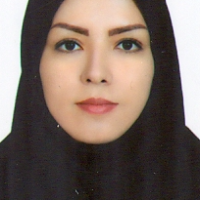Components of Job Motivation in Operating-Room and Anesthesia Staff
One of the important strategies to provide quality care is to motivate healthcare workers.
This study aimed to determine the components of job motivation among operating-room and anesthesia staff.
This cross-sectional study was performed on 152 operating-room and anesthesia staff working in Zanjan hospitals and by the convenience sampling method. Data were collected using demographic and job motivation questionnaire. Data were analyzed using SPSS 16 software and Pearson correlation coefficient and Mann-Whitney test.
The mean (SD) job motivation power was 25.2(11.9) which was relatively desirable. In the operating-room staff, the strongest relationship between the dimensions of motivation and total motivational power was related to the autonomy dimension (r=0.7), and the weakest relationship was associated with the identity dimension (r=0.3). In the anesthesia staff, the strongest relationship was associated with the dimensions of autonomy and feedback (r=0.6), and the weakest relationship was associated with the identity dimension (r=0.001) and total motivational power (P<0.001). Also, the mean (SD) skill variety dimension in operating-room staff was 3 (0.6), which was higher than that in the anesthesia staff was equal to 2.7(0.5) (P=0.015); but the mean score in other dimensions and the total score of motivational power between the two groups had no statistically significant difference (P>0.05).
Given the low score of the job identity dimension, it is better for policy-makers and managers of the health system to take measures to strengthen this dimension of job motivation as one of the priorities of the healthcare system.
-
Levels of generalized anxiety, moral distress, and moral courage among nurses: A comparative study in COVID-19 and non-COVID-19 wards
, Ahmadreza Abedi, Mahboobeh Khosravani, , Andrew Fournier, Maryam Ebrahimabadi*
Preventive Care in Nursing & Midwifery Journal, Winter 2024 -
Professionalism in medical education: An evolutionary concept analysis
Nasrin Hanifi, Fatemeh Gheiasi*
Journal of Medical Education Development, Winter 2025 -
Pattern of Interleukin-17A and Interleukin-1β in Migraine Patients
Fardin Faraji, Ghasem Mosayebi, Afsoon Talaei, Hossein Ansari, , Mobina Ravanbakhsh, Mana Shojapour *
Journal of Kerman University of Medical Sciences, Jul-Aug 2024 -
Investigating the Effect of Reciting the Quran on COVID-19 Anxiety in Women with Gestational Diabetes
Zeynab Beheshti*, Mahbobeh Sajadi, Fatemeh Rafiee
Journal of Diabetes Nursing,



